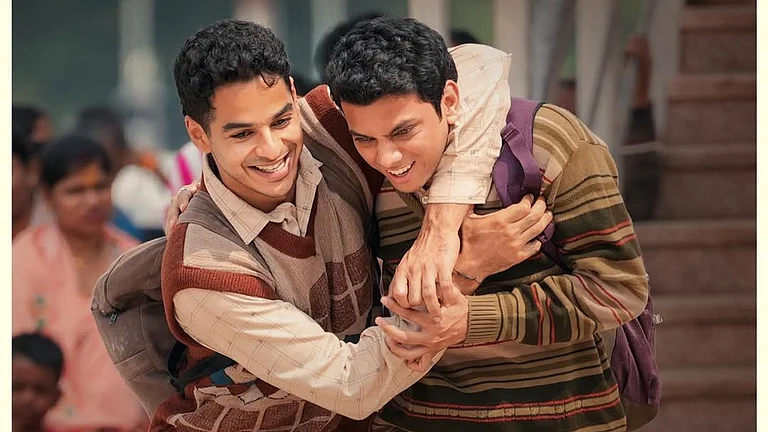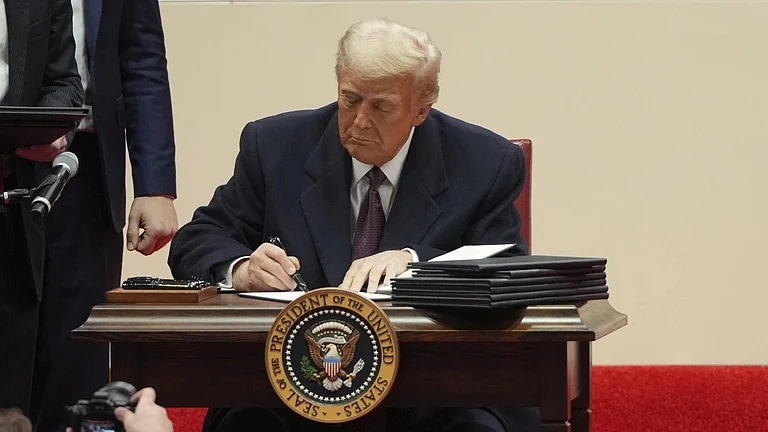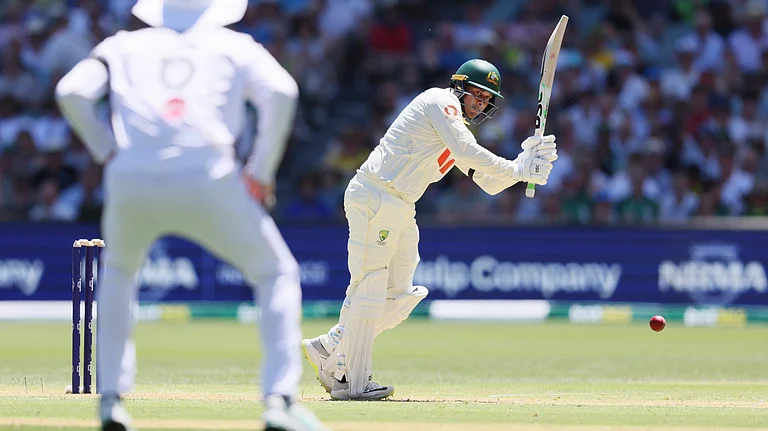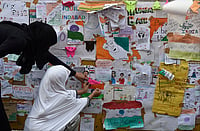Queer stories have remained suppressed for far too long. It’s only recently that they’ve started enjoying a place in the mainstream. But mainstreaming the marginalised comes at its own cost: cultural selection. It’s always one over the other. Who gets to choose what stories must be told? And by whom? Such are the questions facing an individual looking to tell LGBTQ-centric narratives.
Though in the first two chapters of his book Queering Tribal Folktales from East and Northeast India (Routledge, 2021), Kaustav Chakraborty addresses these questions, principally he studies tribal folktales —mainly from the Toto, Rabha, Lepcha, and Limbu cultures— to “establish a counter-discourse of an indigenous queer”.
In Pictures | Pride Month In India And The World
An assistant professor in the Department of English, Southfield (formerly Loreto) College, Darjeeling, Chakraborty’s psychological reading of tribal folktales is a work of unparalleled scholarship. When we read these stories as is, his writing seems to serve what doesn’t meet the eye: his aim was to ensure that what remained amiss in the silences and subliminality of the text comes alive in his assessment.
Chakraborty argues that Indians accepted some social norms as acceptable (‘mainstream’), ignoring their longstanding histories of queerness. He invokes Foucault to highlight that the “normal” came first and “the norm” was deduced from it. Propagation of compulsory heterosexuality, disgust towards same-sex and non-normative desires, and marriages as a legit social contract are but a few things that the colonisers considered ‘normal’. And it is this inheritance that most of the mainland India continues to celebrate.

Through this book, Chakraborty attempts at reviving the “oral performance of storytelling” by creating a record of the 28 folktales that disappeared or were “laid aside out of sight”. As a framework, he has considered “the queernormative moments of the past that are relevant for my dialogic understanding of the modern self through an-other”. Countering the mainstream sexuality discourse that polices desires located outside the strict caste-hetero-patriarchal constructs, he interprets the bizarre, grotesque, flamboyant, and the erotic in these tales through a queer lens.
There are four Toto folktales in this book that discuss intimacy between a grandmother and grandson. The Orphan Boy, in particular, outshines others as it renders the “orphan protagonist’s queer intimacy for heteronormative conjugality, similar to ensuing homoeroticity of a man”. In almost all the tales, the “queer motif wins”.
In yet another story, there are “hints at the togetherness of two males with two kids, which indeed for two tribal queers, as the story suggest, is a happy gay family for a peaceful life”. The tale Seven Brothers and One Sister explores incest. Chakraborty takes this as an opportunity to prophesise that in “the hegemonic settler colonialism, incest had to be negated by regulating it as a taboo in order to counter tribal individuality”.
Limbu folktales especially challenge the ‘ideal woman’ syndrome: Savitri-Draupadi-Sita-glorification. For example, in Four Brothers and a Sister, the sister’s “incestuous desire is symbolically conveyed by the sister’s quest for her brothers and the consequential offering of garlands to them”.
Assessing these tales makes Chakraborty conclude that queerness in Indian history “is the outcome of misrepresentations disseminated by colonialism” and that the “homophobic anxiety cannot be done without trying to excavate the alternative historical queernormative norms of the undocumented time when desires other than heterosexuality were not censored”.
Though the principal goal of the author to ‘queer’ tribal tales is achieved in the book, two things are concerning. First, in the introductory chapters, the author renders several philosophical arguments to defend his position as a researcher and ethnographer. He isn’t a tribal person. This makes the reader question whether he accurately understood, translated, and interpreted these stories. But because he was armed with an array of resources and translators, we can be assured that this shouldn’t worry us.
However, the repetitive explanation that he is an ‘outsider’ assessing the ‘othering’ makes one question: Why indulge then? Sample the apologetic undertone of this sentence, for example: “Authorship cannot be dictated by experience; rather outsiders can formulate theorisation by virtue of their distance from experience.” While distance is required for any authorial exercise, the first-hand experience not only renders authenticity but also in the telling stories of the marginalised it’s quintessential.
This should make one sceptical to continue with this work, but it’s appreciable that Chakraborty clearly lays out his politics: who he is, where he’s coming from, and what he’s doing with the material. It’s also notable that he doesn’t claim a ‘strict neutrality’ or ‘uninvolved position’.
While all this isn’t problematic, suggesting that queer people could collectivise themselves as ‘neo-Bahujans’ as a political category is troubling. Chakraborty writes, “Reconsidering Dalit as not exclusively a birth-based natural identity, queer Indians should forge an intimate bond with the Dalit Bahujan tribals by politically positioning themselves as neo-Bahujan in order to fight against a common adversary.”
It seems that Chakraborty is forgetting that we bear and exercise multiple identities when faced with different situations. An oppressor-caste queer person like me definitely enjoys more privileges than a Dalit queer. Clubbing both as neo-Bahujans will not only overlook privileges of an upper-class and -caste person and create a fake equanimity but will also label the ‘centre’ as the ‘margin’, and that’s certainly not ‘mainstreaming’ marginality. And it’s far from queering.
(Saurabh Sharma is a Delhi-based queer writer.Instagram/Twitter: @writerly_life.)

























